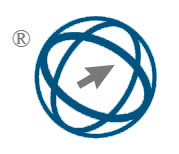Fusion of Deep Convolutional Neural Networks and Brain Visual Cognition for Enhanced Image Classification
Abstract
The brain visual system is one of the core centers for human perception of external information. How to establish the brain visual cognitive system to classify and process image information is a key matter in the area of human-computer connection. In order to improve the accuracy of computer vision image classification, a fusion intelligent computing model based on deep convolutional neural network and brain visual cognition is proposed. This model simulates the visual processing mechanism of the human brain and uses brain computer interface technology to extract electroencephalogram signals, thereby achieving efficient classification and processing of image information. When designing an image classification model based on DCNN, a long short-term memory network structure is introduced to extract time series features of electroencephalogram signals. In order to enhance the classification accuracy of the model, attention mechanism and occlusion independent neural response methods are also applied to improve the accuracy of capturing the correlation information between brain response and image features. The results show that the prediction accuracy of the research model reaches 93.54% and 94.03% in the V4 visual region and L0 visual region, respectively. The highest accuracy on facial visual images reaches 95.46%, while the lowest accuracy on animal visual images is 91.57%. By introducing the long short-term memory module, the loss value of the model decreases from 0.26 to 0.21, with a reduction of 19.23%. In addition, ablation experiments show that by introducing attention mechanisms and occlusion independent neural responses, the final classification accuracy is improved to 93.94%. In summary, the research on the fusion intelligent computing model grounded on deep convolutional neural networks and brain visual cognition effectively improves the accuracy of image classification and demonstrated its potential in the field of intelligent computing.
Full Text:
PDFReferences
References
Wilson H, Chen X, Golbabaee M, Proulx, M. J., & O’Neill, E. Feasibility of decoding visual information from electroencephalogram. Brain-Computer Interfaces, 2024, 11(1-2): 33-60.
Finlayson S G, Subbaswamy A, Singh K, Bowers, J, Kupke, A., Zittrain, J & Saria, S. The clinician and dataset shift in artificial intelligence. New England Journal of Medicine, 2021, 385(3): 283-286.
Masana M, Liu X, Twardowski B, Menta, M., Bagdanov, A. D & Van De Weijer, J. Class-incremental learning: survey and performance evaluation on image classification. IEEE Transactions on Pattern Analysis and Machine Intelligence, 2022, 45(5): 5513-5533.
Zhu Y, Zhuang F, Wang J, Ke, G., Chen, J., Bian, J & He, Q. Deep subdomain adaptation network for image classification. IEEE Transactions on Neural Networks and Learning Systems, 2020, 32(4): 1713-1722.
Hong D, Gao L, Yao J, Zhang, B., Plaza, A & Chanussot, J. Graph convolutional networks for hyperspectral image classification. IEEE Transactions on Geoscience and Remote Sensing, 2020, 59(7): 5966-5978.
Gao Z, Sun X, Liu M, Dang, W., Ma, C., & Chen, G. Attention-based parallel multiscale convolutional neural network for visual evoked potentials electroencephalogram classification. IEEE Journal of Biomedical and Health Informatics, 2021, 25(8): 2887-2894.
Ahirwal M K, Kose M R. Audio-visual stimulation based emotion classification by correlated electroencephalogram channels. Health and Technology, 2020, 10(1): 7-23.
Komolovaitė D, Maskeliūnas R, Damaševičius R. Deep convolutional neural network-based visual stimuli classification using electroencephalography signals of healthy and alzheimer’s disease subjects. Life, 2022, 12(3): 374-379.
Kumari N, Anwar S, Bhattacharjee V. Time series-dependent feature of electroencephalogram signals for improved visually evoked emotion classification using EmotionCapsNet. Neural Computing and Applications, 2022, 34(16): 13291-13303.
Santamaria-Vazquez E, Martinez-Cagigal V, Vaquerizo-Villar F, & Hornero, R. electroencephalogram-inception: a novel deep convolutional neural network for assistive ERP-based brain-computer interfaces. IEEE Transactions on Neural Systems and Rehabilitation Engineering, 2020, 28(12): 2773-2782.
Yıldırım Ö, Baloglu U B, Acharya U R. A deep convolutional neural network model for automated identification of abnormal electroencephalogram signals. Neural Computing and Applications, 2020, 32(20): 15857-15868.
Miao M, Hu W, Yin H, & Zhang, K. Spatial‐Frequency feature learning and classification of motor imagery electroencephalogram based on deep convolution neural network. Computational and Mathematical Methods in Medicine, 2020, 2020(1): 1981728-1981752.
Li F, He F, Wang F, Zhang, D & Li, X. A novel simplified convolutional neural network classification algorithm of motor imagery electroencephalogram signals based on deep learning. Applied Sciences, 2020, 10(5): 1605-1624.
Cohn N. Your brain on comics: a cognitive model of visual narrative comprehension. Topics in Cognitive Science, 2020, 12(1): 352-386.
Finlayson S G, Subbaswamy A, Singh K, Bowers, J, Kupke, A., Zittrain, J & Saria, S. The clinician and dataset shift in artificial intelligence. New England Journal of Medicine, 2021, 385(3): 283-286.
Bicanski A, Burgess N. Neuronal vector coding in spatial cognition. Nature Reviews Neuroscience, 2020, 21(9): 453-470.
Franzen L, Stark Z, Johnson A P. Individuals with dyslexia use a different visual sampling strategy to read text. Scientific Reports, 2021, 11(1): 6449-6455.
Zhou S K, Greenspan H, Davatzikos C, Duncan, J. S, Van Ginneken, B, Madabhushi, A & Summers, R. M. A review of deep learning in medical imaging: Imaging traits, technology trends, case studies with progress highlights, and future promises. Proceedings of the IEEE, 2021, 109(5): 820-838.
Basso M A, Bickford M E, Cang J. Unraveling circuits of visual perception and cognition through the superior colliculus. Neuron, 2021, 109(6): 918-937.
Ly A, El-Sayegh Z. Tire wear and pollutants: an overview of research. Archives of Advanced Engineering Science, 2023, 1(1): 2-10.
DOI: https://doi.org/10.31449/inf.v49i16.7787

This work is licensed under a Creative Commons Attribution 3.0 License.









